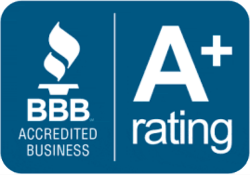Identifying And Managing Asbestos In Your HVAC System
Asbestos is a word that brings immediate concern, and rightly so. For much of the 20th century, it was widely used in home construction materials due to its durability and fire-resistant properties. However, its dangerous health risks were not fully understood until later. When fibers become airborne and are inhaled, they can lead to severe illnesses. In homes built before the 1980s, asbestos was commonly used in various parts of HVAC systems. While asbestos is generally okay if left undisturbed, the moment it is touched, moved, or damaged, fibers can become airborne, posing a serious health risk.
The team at MN Duct Pros has encountered asbestos during duct cleanings, especially in older homes. The material tends to show up in places that may not be immediately obvious to the untrained eye. If it is found, the cleaning project is put on hold until the proper testing is done.
Common Areas
In homes where it is still present, it most often appears in several key parts of the HVAC system. One of the most common places is in the white tape used to seal duct joints. This tape, which was once widely used due to its durability, now presents a hidden danger in older homes.
Another common area is the insulation on the duct trunk lines, the main passageways that distribute air throughout the house. The insulation often blends in with the surrounding material, making it easy to miss without proper inspection.
Additionally, it may be found in the dampener pad located above the furnace. This pad, meant to reduce noise and vibration, can harbor fibers. Even the duct connectors, responsible for joining various sections of the ductwork, can contain asbestos in older installations. Each of these components presents a potential health risk, and we treat them with the caution they deserve.
How Asbestos Can Go Undetected In Your Home
One alarming issue is that many HVAC systems containing asbestos have been cleaned by other companies without proper precautions, and this practice poses a serious health risk. When asbestos-containing materials are disturbed during the cleaning process the dangerous fibers can be released into the air. These fibers can then circulate through the home, endangering everyone inside.
It is common for homeowners to be unaware that their system has been cleaned improperly. In some cases, the asbestos in the ductwork might not have been discovered during previous cleanings. This is why we conduct a thorough inspection before beginning a duct cleaning job. The safety of the home and its occupants is our top priority.
Another common issue is the failure to identify asbestos during routine home inspections. While a home inspection is intended to uncover potential problems, it can often be overlooked, and many homes go on the market without asbestos being disclosed. We have encountered cases where obvious asbestos, such as wrapped trunk lines, was missed during inspections. Just because a home passed inspection doesn’t mean it’s free from the contaminant.
This oversight can have serious consequences for homeowners, especially when it comes time to perform necessary maintenance or upgrades to the HVAC system. Without proper testing, homeowners might unknowingly expose themselves and their families during routine repairs or duct cleanings.
Many homeowners assume that when they upgrade their furnace or air conditioning unit, their duct system is automatically free from asbestos. Unfortunately, this is not always the case. While HVAC companies replace furnaces and coils, they rarely replace the entire duct system. As a result, asbestos may remain hidden in the older ductwork, posing an ongoing risk to the home's occupants.
We have seen instances where multiple furnace replacements have been done, but the original asbestos-containing ductwork remains in place. This is especially common in homes built before it was banned in construction materials. The assumption that new installations eliminate the risk is a dangerous one, and homeowners should be vigilant in ensuring that their entire HVAC system is asbestos-free. Regular inspections and proper testing are essential to maintaining a secure indoor environment.
The Role Of Testing And Remediation
When we suspect it in a home’s HVAC system, testing is the first step in addressing the issue. In many cases, the team can take a sample of the suspect material and deliver it to a local lab for testing. The results typically come back within a few days, allowing homeowners to make informed decisions about remediation. Testing is important because it confirms whether it is present, guiding the next steps in safely cleaning the system.
If it is detected, the home must undergo professional remediation before we can proceed with the duct cleaning. We do not handle removal directly, but we work closely with licensed abatement companies that specialize in this service. Once it has been removed, we return to thoroughly clean the system.
The ultimate goal of duct cleaning is to improve indoor air quality. However, when it is present in a home’s HVAC system, cleaning without proper testing can have the opposite effect. By identifying and addressing asbestos concerns, we ensure that homeowners can breathe easier, knowing that their HVAC system is not only clean but also free from hidden health risks.
Contact us today for more information.


